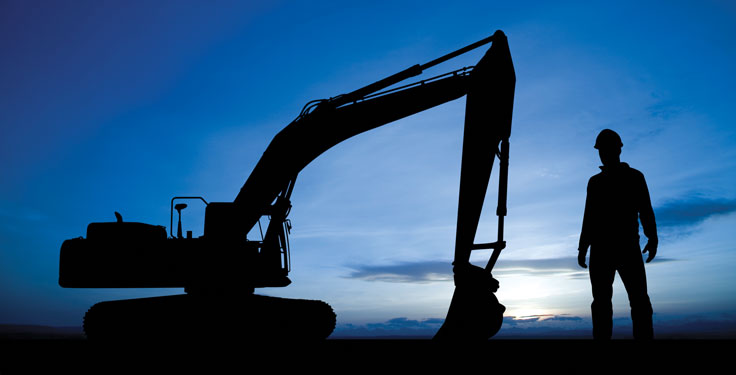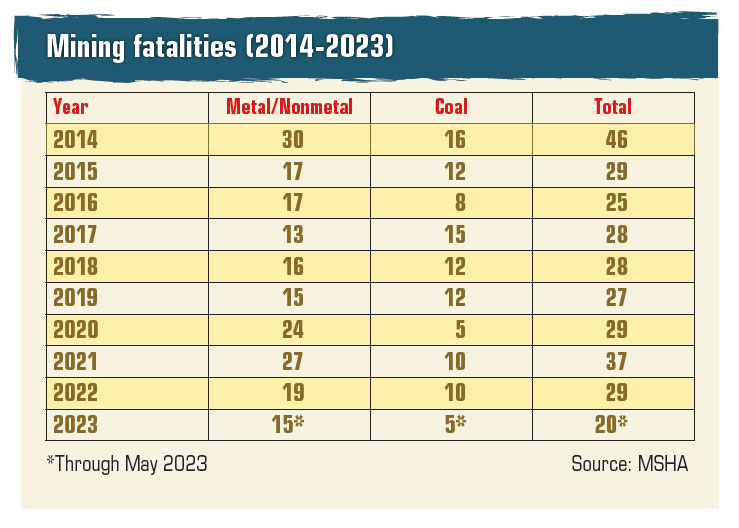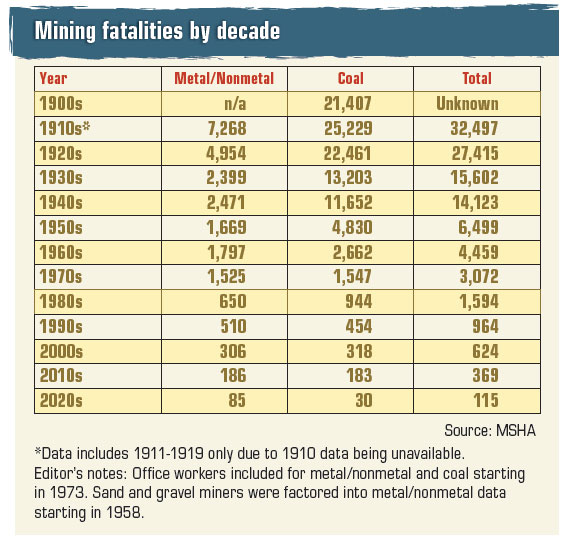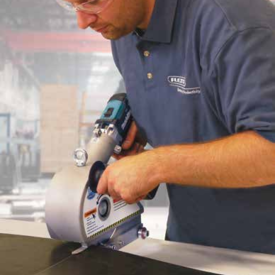
Mining fatalities were trending in the wrong direction through five months of 2023, with Mine Safety & Health Administration (MSHA) reports indicating that 21 miners were killed in accidents this year through June 1.
Twenty-nine miners died in accidents across all of last year, although fatalities were up significantly in the first months of 2022 before they tapered off. MSHA reports show that 12 of the 29 miners killed in 2022 died in the first quarter.
Unfortunately, the industry’s safety record to start 2023 is even worse than a year ago, as 14 miners were killed in accidents in the first quarter alone.
The uptick in fatalities has the attention of MSHA, which recently hosted its first “Stand Down to Save Lives” day to encourage industry stakeholders to intensify their safety focus on the conditions that lead to serious and fatal accidents.
“Two years ago, [we saw] the most fatalities that the industry had experienced since 2014,” says Chris Williamson, assistant secretary at MSHA, in an exclusive interview with Pit & Quarry. “Last year, we had 29. That’s still 29 too many, but there was a reduction, and I believe it was [by] eight fatalities.”
Areas to emphasize

Powered haulage, for one, continues to be a problematic area of mine safety for the industry.
MSHA classified five of this year’s 20 mining fatalities as powered haulage accidents. The incidents involved moving equipment, including a haul truck, a mobile stacker belt conveyor, a battery-powered personnel carrier, a tractor-trailer and a personal vehicle.
Machinery is another leading cause of the 2023 fatal accidents, with MSHA classifying seven of 21 as such. Another three were classified as electrical accidents.
As Williamson reflects on other factors contributing to this year’s fatalities, a few things stand out.
“One of them is experience,” he says. “We’re seeing less experience at the mine site – less overall experience. Some of the issues we’re seeing are [related to] training: site-specific hazard awareness training, task training, lack of adequate training. Examinations across the board [are another]: workplace examinations, examinations of machinery and different types of equipment.”

Historical perspective
Historically, of course, mining fatalities are at an all-time low.
The number of mining fatalities that took place each year during the first 75 years of the 20th century is staggering, with MSHA data showing that thousands of miners were annually killed across the nation.
“My message has been [that] miners are safer and healthier if we all work together,” Williamson says.











